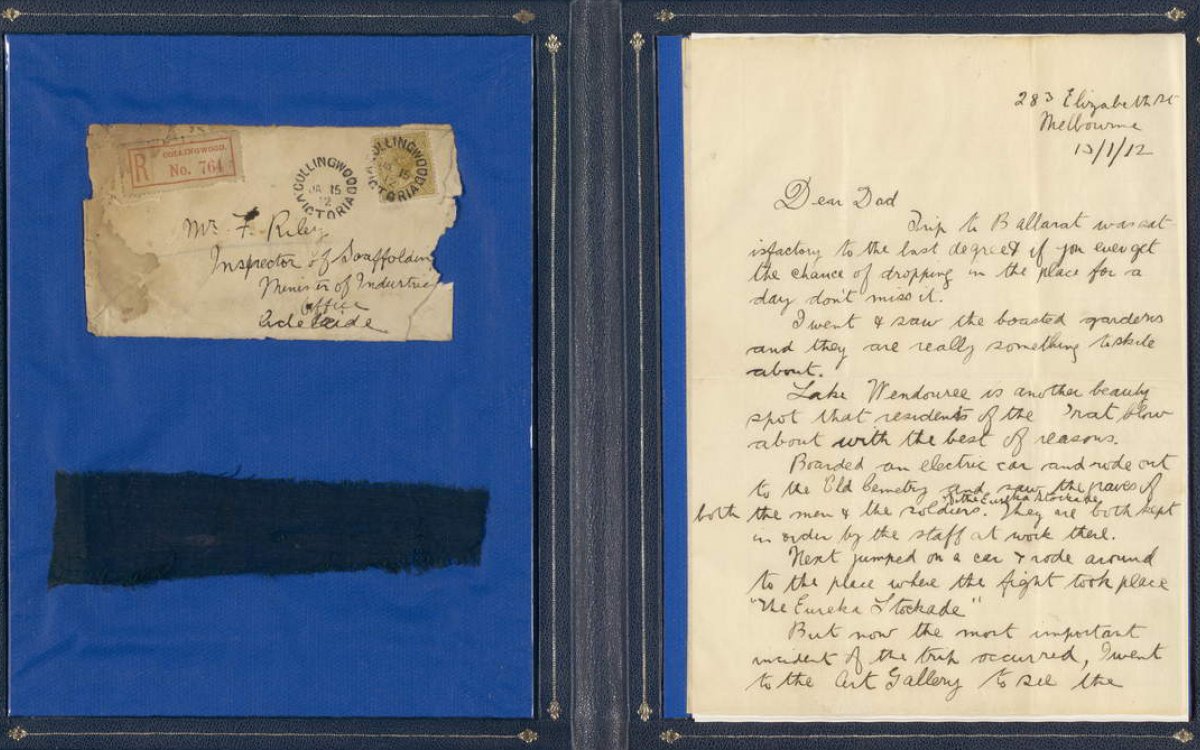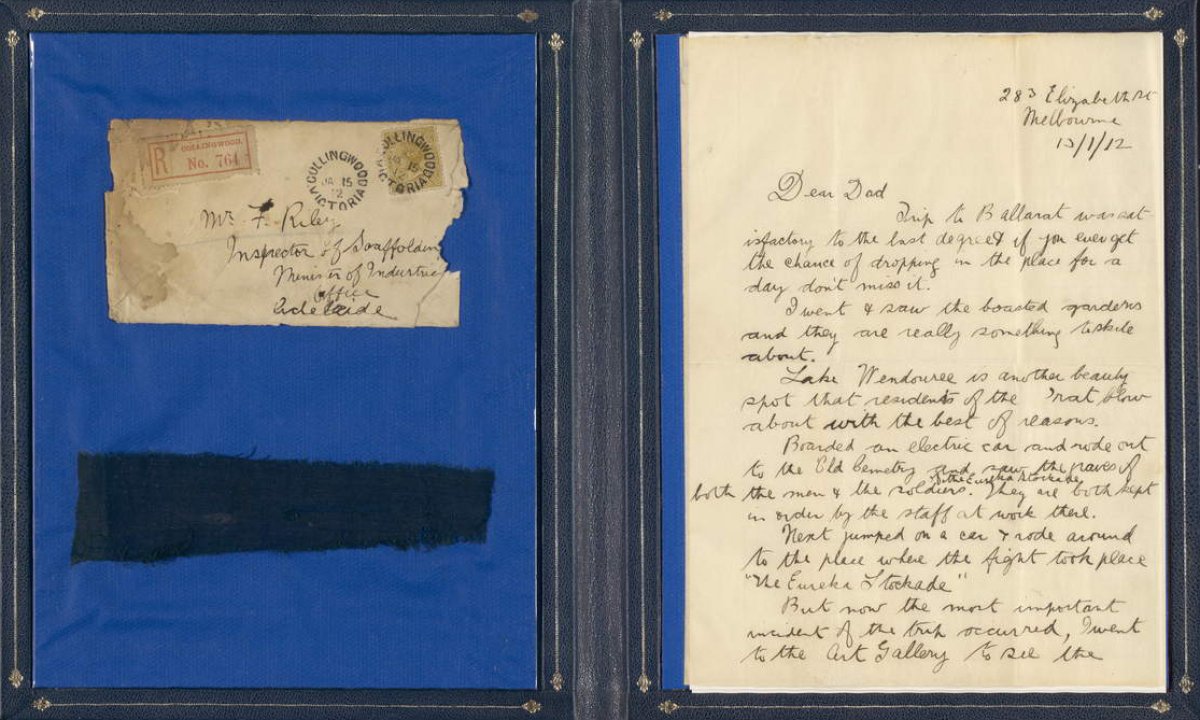Housed in a blue-bound folder, in a collection at the National Library of Australia, is a fragment of blue fabric that represents the pursuit of Australian democracy. The folder contains a portion of the Eureka Flag flown at Ballarat, Victoria, during the 1854 Eureka Rebellion. The folder also houses an accompanying explanatory letter dated 13/1/1912 from Fred (F.J.) Riley to his father, Fred Riley.
The Eureka Rebellion of 3 December 1854 is sometimes regarded as Australia’s civil war. It was a rebellion by gold miners against the government over the unfair policing of miners’ work and the cost of miners’ licences. Tensions between the miners and the authorities had been building for some time prior to the rebellion; however, the battle itself lasted only 30 minutes. The brief, early morning gunfight between miners and police resulted in the deaths of at least 22 miners and six troopers, but the confrontation led to the establishment of a Royal Commission. As a result of this investigation, the licence system changed and miners’ rights were addressed.
The Eureka Flag is generally believed to have been sewn by three women (each the wife of a miner). It is made from a variety of fabrics—wool, cotton and cotton/wool blends. The flag features the five stars of the Southern Cross—the constellation that dominates the Australian night sky.
Before being flown at the Eureka Stockade, the flag was raised on Bakery Hill in the days leading up to the battle. At evening meetings, designed to rouse miner support for change, men stood beneath the flag and swore an oath: ‘We swear by the Southern Cross to stand truly by each other and fight to defend our rights and liberties’.
While a large portion of the flag still exists, 40 per cent of the original flag is damaged or missing. (The existing portion was donated to the Art Gallery of Ballarat in 2001 and is currently on loan to the Museum of Australian Democracy at Eureka.) Much of the missing part was souvenired in the years after the rebellion by being cut or torn from the flag and kept by troopers, soldiers, officials, and members of the public. Just how many of these missing portions remain extant is uncertain—the fragment in the Library collection is one piece of a large puzzle that may never be solved.

(1854). Portion of the flag flown by the miners at the Eureka Stockade, 1854 [realia]. nla.gov.au/nla.obj-139600656/
1. Prepare your students for the activities below by discussing the events that led to the Eureka Rebellion on 3 December 1854, and by explaining the provenance of the flag remnant held at the National Library of Australia.
2. Ask students to examine the letter accompanying the portion of the Eureka Flag in the Library’s collection:
Help students decipher what the letter says about the flag portion. (Use an interactive whiteboard or an enlarged print version of the digital image.) Use the letter to explore the following questions:
- How did F.J. Riley acquire this piece of the flag?
- What words does Riley use to describe the act of tearing a piece of the flag? What do these words mean?
- What instructions does Riley give to his father?
- Why do you think Riley wants his father to take good care of this piece of flag?
3. Use the following questions to explore the flag portion held at the Library:
- How old is this item?
- What makes this item a treasure?
- What does this piece of fabric represent?
- Why should it be preserved?
- What could the flag portion tell us about the events of 1854? What might we find if we looked very closely at it?
- How did the events of 1854 shape Australia?
- What would it have been like to be a miner in the 1850s in Victoria?
4. Working singly or in pairs, invite students to research the key people who contributed to events on the Victorian gold fields and to the Eureka Rebellion. Options include Charles Hotham, Peter Lalor, James Bentley, James Scobie and Redmond Barry, and the women who are believed to have made the flag—Anastasia Hayes, Anastasia Withers and Anne Duke. Ask your students to create a deck of cards for display in the classroom. Each card should detail the biography of the person being researched, their contribution to the story of Eureka, and an authentic image if students can locate one. Use these cards to create a timeline reflecting the events in Ballarat between 1851 and 1854.
5. A gold miner’s licence, prior to the Eureka Rebellion, cost 30 shillings. Ask students to research what they could buy in 1854 for 30 shillings.
Other Treasures sources that relate to the concepts explored in this source include: The Promise of Gold
